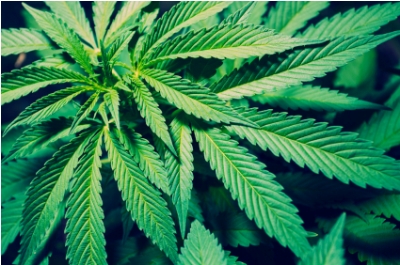

By Elise McDonough
"Everybody smokes dope after work," Anthony Bourdain told the New York Times, without any apparent reservations, about a year ago. "People you would never imagine."
And with that widely debated article, "Marijuana Fuels a New Kitchen Culture," the archetype of "stoner chef" fully emerged in America's pop culture consciousness. The paper of record finally acknowledged that much like many musicians, artists and other creative types, cannabis-friendly cooks often fire up their imaginative powers by taking a break from the heat in the kitchen and going outside to spark up a jay.
Cannabis is a sensual enhancer that lends itself particularly well to the foodie lifestyle, heightening the entire gourmand experience, from selecting ingredients to preparing, plating, eating and maybe even washing the dishes. So whether you're a home cook or a budding culinary star, rest assured that a penchant for pot puts you in good company.
What exactly is stoner cuisine? The mainstream media would jeer that it's nonstop gorging on low-quality snack foods like cheesy puffs, potato chips and candy bars, but in reality most stoner chefs express themselves by re-imagining traditional dishes, or fusing flavors together in new ways to create inspired combinations. Some may initially sound strange, but turn out to be wonderful. The next novel ingredient to find itself so reimagined just might be the grassy tasting connoisseur-quality ganja.
Cannabis oil and weed dinners
Chefs have been infusing cannabis into their dishes, taking the venerable old pot brownie concept to amazing new places. In Northern California, epicenter of our nation's medical marijuana revolution, master chocolatier Scott Van Rixel uses concentrated cannabis oil to create his award-winning marijuana-infused Bhang bars, available to anyone with a medical marijuana card and access to a discerning dispensary.
In Los Angeles, Chefs Laurent Quenioux and Thi Tran recently hosted a top-secret "Weed Dinner" that aimed to utilize marijuana not just as an intoxicant, but as a unique flavor note. Are we boldly entering the frontier of "haute stoner cuisine?" Well, clearly there's something in the air...
As awareness of the medicinal properties of cannabis has grown -- relief from pain and nausea, anti-inflammatory and cancer-fighting properties -- so too has demand for healthier ways to ingest beneficial cannabinoids, the unique chemical components of cannabis. Which means that while "medibles" (medical marijuana edibles) laden with saturated fats, sugars and additives still dominate the dispensary marketplace, juicing raw leaves has also become popular for patients who need high doses of non-psychoactive THC and CBD. The Omega Bar, an entry in the High Times Medical Cannabis Cup, the magazine's series of blind tastings that determine the best cannabis, concentrates and edibles in San Francisco, included "crystal energy" among its ingredients, which included as many organic superfoods as a yogi's pantry.
For a long time, the taste of marijuana was considered one to avoid when creating cannabis-infused edibles and often cloaked with chocolate and peanut butter in fat-laden, sugary treats. That's largely because edible makers were almost exclusively using leaves and other unsmokable forms of the plant to create their "added value" products. But bud prices have fallen sharply lately, thanks to a glut in the market, while the edibles sector continues to grow. As a result, it has become increasingly common to cook with higher quality ground cannabis flowers, and even hashish, both of which impart a much sweeter, far more pleasant taste than leaves.
This field of knowledge will probably expand considerably in the coming years, and the possibilities are dazzling. "Haze" strains rich in sabinene and myrcene can be paired with foods like Thai-style soups with mango and lemongrass that contain the same terpenes (see The Official High Times Cannabis Cookbook for a recipe). Savory dishes like rosemary-roasted potatoes would sing with the addition of cannabis butter from a strain containing pinene. And naturally you'd have to finish up with a chocolate dessert infused with a minty cannabis strain high in alpha-phellandrene.
It's a brave new world out there for the herb-forward cook. All of us should be able to source local, organic cannabis leaves at the health food store. This powerful herb is an essential part of a healthy diet.
This week's Zester Soapbox contributor, Elise McDonough, designer for High Times magazine and art director for the High Times' Medical Marijuana magazine, has sampled cannabis cuisine ranging from Amsterdam coffeehouse spacecakes to award-winning medical edibles in California and Colorado to the ganja-infused specialities of inspired home cooks. The author of the new "The Official High Times Cannabis Cookbook," which contains more than 50 recipes for cannabis-infused cuisine, she lives in Northern California. Follow her at @EliseMcd420